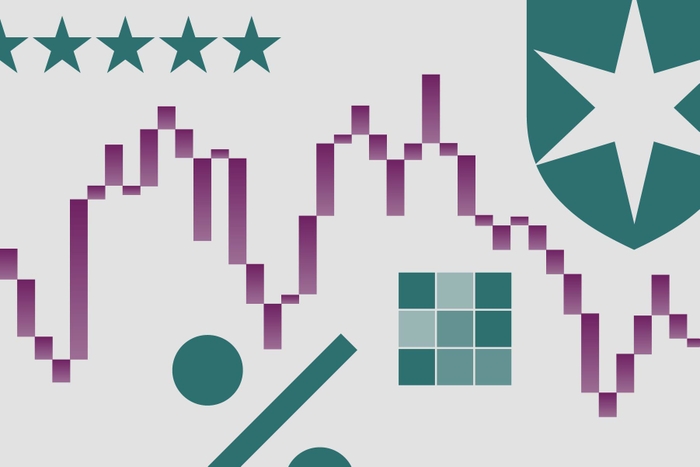
With a third European Central Bank rate cut now confirmed, European inflation has reached 1.8%, below its 2% target. Markets now expect several more rate cuts, provided inflation does not spike once more. So what does that mean for bond investors?
You might assume rapidly falling inflation would raise concerns about low economic growth on the continent, but, though growth is low in absolute terms, fears of a real recession among investors seem to have subsided.
For example, the yield curve has not been inverted for some time, which is to say: short-term interest rates are now lower than long-term rates again, after that was reversed in 2022. An inverted curve indicates investors expect lower growth in the future and also lower interest rates. As a rule of thumb, it tends to indicate a recession is on the way.
The turn toward interest rate cuts this year has pushed up bond returns, with high yield bonds outperforming corporate bonds, core bond and government bonds, as the chart below shows:
Where Are Corporate Bonds Most Attractive?
Where are the best opportunities in bonds in the current environment of falling interest rates? Bond managers have positioned themselves for a steeper yield curve in the US and prefer the short side of the curve, says senior manager research analyst Elbie Louw.
As a region, many bond managers find the US expensive, so they prefer to look at Europe and the UK, says Louw.
“Within Europe, managers are underweight France because of political concerns, while they are overweight Germany. The UK is also in demand. Managers are underweight Japen in bond portfolios, and underweight riskier regions like emerging markets.” As for credit sectors, Louw says managers are overweight defensive sectors and underweight cyclical sectors. High yield is still highly sought after.
Why? Because High yield has performed above average of late, and is still preferable in the current macro environment. So says Karim Chedid, head of BlackRock’s EMEA investment team at BlackRock.
“With interest rates coming down in developed markets, it’s time to grab yields that are close to historical highs in the high yield category,” Chedid says.
“We still like high yield in the current market, with a slight preference for the US over Europe.” Effective yields are still attractive in both regions, at 6.6% for the US and 5.8% for Europe, though that is down from a year ago when they were around 9%.
Concerns about low economic growth apply to all asset classes, according to Chedid.
“We don’t need significant growth for credits to perform well. High yield has clearly shown that so far this year,” he says.
Fundamentals remain strong with default rates (the default on interest payments and repayments by issuers) on an issuer-weighted basis “consistent with the long-term average over the past 25 years,” he adds.
The popularity of high yield is causing new high yield bond issuance to surge so far in 2024, says Morningstar fund analyst Jeana Doubell, who tracks the high yield category.
“We are also seeing strong inflows of assets into the broader high yield market, which in early October went mainly to BB and B-quality credit that is more resilient to headwinds. Lower quality (with a CCC rating or lower) is not as widely represented in bond portfolios, averaging less than 5% exposure, where three years ago that peaked at 14%.”
How Can I Successfully Invest in High Yield?
Doubell, meanwhile, does say defaults increased in the first nine months of 2024 in the lower-quality segment. That was because of lean results, low cash flows and increased leverage, or larger debt positions at companies.
In the high yield segment, Robeco’s bond strategists make a clear distinction between higher- and lower-quality rated companies. Although we are now in an environment of interest rate cuts, companies still have to deal with rolling over loans taken out at a time when interest rates were near zero.
According to Robeco managers Sander Bus (high yield), Reinout Schapers (investment grade), and Matthew Jackson (investment grade), less prosporous companies are currently finding it much harder to refinance, which raises the threat of restructuring and write-downs for investors. Bus is co-lead manager of the Robeco High Yield Bonds Fund, which has a Morningstar rating of gold.
Meanwhile, although portfolio managers are moving toward high yield, higher-quality bonds remain undiminished in their importance in portfolios. Doubell notes that, in the first half of this year, the bond market still clearly factored in interest rates that would remain higher for longer, and therefore did not want to move into the riskier, lower grades at the time. But now the pivot to falling interest rates is confirmed, “portfolio managers are still reluctant to fully wind down their high-quality portfolio positions.”
Robeco’s view of quality stems largely from tight spreads: the difference in yield between 10-year government bonds and corporate bonds. With tight spreads, the risk of lower quality does not always outweigh the potential return. For the Robeco trio, assessment of spreads is the main measure of value in the market. They say spreads are relatively tight in light of 20 years of historical spread data “in all segments of the credit market.” Then quality matters, particularly with investment grade, where “spreads in the US are exceptionally tight, while those in Europe are just below the 20-year average, making Europe more attractive than the US,” they say.
For her part, Louw thinks spreads will tighten further, which she says is leading bond managers to be cautious. Blackrock’s Chedid currently sees “no major drivers that could widen spreads in high yield.”
Below we list the global high yield bond funds available in the Netherlands that have a Morningstar Medalist Rating of Gold, Silver or Bronze:
The author or authors do not own shares in any securities mentioned in this article. Find out about Morningstar's editorial policies.
























